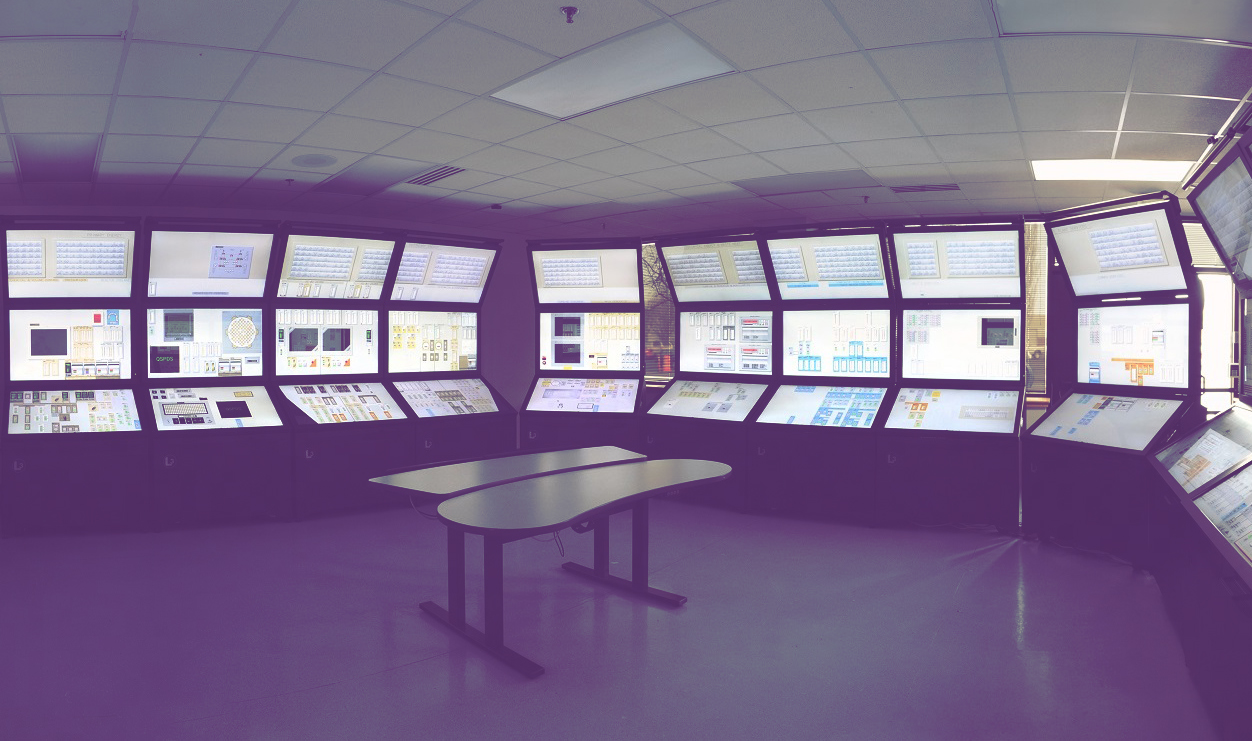A Glass-Top simulator is a type of simulator in which, by definition, the human-machine interaction between the operator and the simulated plant takes place through a glass surface with tactile sensitivity.
Below the tactile surface, a set of monitors shows our desired operational interface, even as the computers that control them process the simulation code. If necessary, the operator can navigate intuitively through the entire operational layout.
A simple idea that brings numerous advantages to the simulation environment, such as:
Flexibility
In contrast with a traditional simulator, changing the design of the panels or the simulation dynamics becomes a simple and easy process here.
This gives the user the opportunity to modify – on the fly, whether from the instructor’s control panel or remotely – the type of instrument, the simulation parameters, the scale of an analog indicator, and more.
In contrast to the rigidity of a traditional simulator, the possibilities for testing, experimentation, verification and validation grow exponentially due to the simplicity of this simulator and the reduction of the time needed to execute such processes. For example, we can use human-factors engineering to validate different layout designs, so as to reduce the risk of human error in the operation overall.
Modularity
Glass-Top simulators are modular: their dimensions can be modified so that they will fit in a small room, or in a space that is similar to a main control room in size.
This is made possible through a module-based design that allows one to add or remove as many modules as one wishes, while maintaining, in all cases, the complete interface layouts on the panels.
Savings on costs
Thanks to its modularity, this type of simulator can easily be assembled, disassembled or moved to another location, leading to substantial savings on the costs of logistics and transport.
Any interface in its initial design phase, or any future modification, will be possible to test out beforehand in the Glass-Top simulator, thus reducing any risks and aligning the end-user with the design solution. This simplicity contributes to the reduction of the overall costs of any project.
In addition, these simulators make it possible to reduce the use of full-scope simulators, which usually have a high occupancy rate.
Multidisciplinary training
A Glass-Top simulator can be utilized for training in any discipline related to plant operation, much simply than the alternatives. Using this type of simulator, one can provide trainings in areas ranging from General Operations or Emergencies – situations that can affect the safety of the plant – to maintenance or calibration of specific equipment.
Sustainable future
Glass-Top simulators are the future of simulation environments because:
- They are easy to maintain, with reduced costs of instrumentation and wiring
- They are flexible and modular, ideal for training and design
- They can be localized, without the need to take up large surfaces, both at plants and at comprehensive training centers
- Their costs are reduced relative to classic simulators
- The conditions of operation are more realistic than in a full 3D virtual simulator
- They can be adapted to all types of simulation environment, such as: Aeronautics, Power Generation, Industrial or Traffic. They are deeply interesting for prototypes of new-generation plants, such as small modular nuclear reactors (SMRs)






